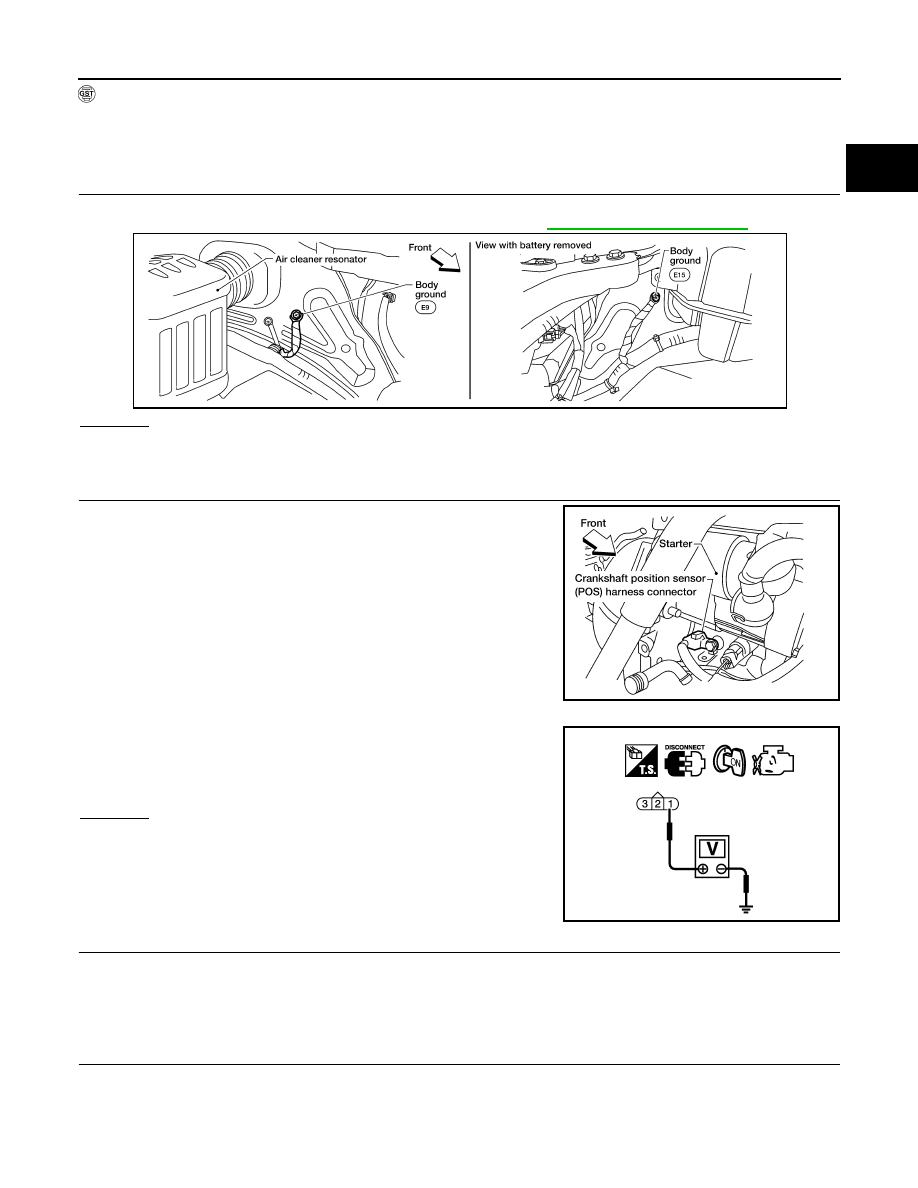Nissan Frontier. Manual - part 422

P0335 CKP SENSOR (POS)
EC-259
< DTC/CIRCUIT DIAGNOSIS >
[QR25DE]
C
D
E
F
G
H
I
J
K
L
M
A
EC
N
P
O
WITH GST
Follow the procedure “WITH CONSULT” above.
Diagnosis Procedure
INFOID:0000000009480919
1.
CHECK GROUND CONNECTIONS
1. Turn ignition switch OFF.
2. Loosen and retighten two ground screws on the body. Refer to
.
OK or NG
OK
>> GO TO 2.
NG
>> Repair or replace ground connections.
2.
CHECK CRANKSHAFT POSITION (CKP) SENSOR (POS) POWER SUPPLY CIRCUIT
1. Disconnect crankshaft position (CKP) sensor (POS) harness
connector.
2. Turn ignition switch ON.
3. Check voltage between CKP sensor (POS) terminal 1 and
ground with CONSULT or tester.
OK or NG
OK
>> GO TO 4.
NG
>> GO TO 3.
3.
DETECT MALFUNCTIONING PART
Check the following.
• Harness for open or short between crankshaft position sensor (POS) and ECM
>> Repair open circuit, short to ground or short to power in harness or connectors.
4.
CHECK CKP (POS) GROUND CIRCUIT FOR OPEN AND SHORT
1. Turn ignition switch OFF.
2. Check harness continuity between CKP sensor (POS) terminal 3 and ground.
Refer to Wiring Diagram.
BBIA0614E
BBIA0619E
Voltage: Approximately 5 V
PBIB0664E